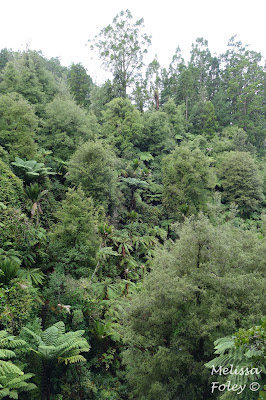We go out of town frequently but not every weekend. When we stay in Auckland, we try to do some type of local activity. Auckland is the largest city is New Zealand and houses about 40% of the country's population. In addition to the numerous parks around the region, there seems to be some kind of festival happening nearly every weekend, especially during the summer. We have really tried to take advantage of all that city living has to offer.
During the summer, the Auckland Botanic Garden hosted Sculpture in the Gardens. There were ~25 pieces spread throughout the gardens, ranging from water features to giant sculptures. Some pieces used the plants within the Botanic Garden as a platform, while others were completely stand alone. Many were whimsical and a fun addition to the gardens.
Auckland has a large population of Pacific peoples, mainly from Samoa, Tonga, Niue, and the Cook Islands. They are the third largest ethnic group and make up nearly 15% of the population. Although many of the island cultures can be traced back to ancestors from Hawai'i, the island traditions diverged due to isolation from others. There are multiple festivals during the year to celebrate Pacific Island culture, including the Pasifika Festival just down the road from our house. Each Pacific nation has its own area to showcase dance, music, language, and food from their homeland. It is a colorful festival that highlights the similarities and differences of each island nation.
During the summer, the Auckland Botanic Garden hosted Sculpture in the Gardens. There were ~25 pieces spread throughout the gardens, ranging from water features to giant sculptures. Some pieces used the plants within the Botanic Garden as a platform, while others were completely stand alone. Many were whimsical and a fun addition to the gardens.
an unofficial addition to the sculptures
dancers from Tuvalu
colorful crowns of flowers
The second largest ethnic group in Auckland is Asian. This is a very broad category in the census that doesn't capture the diversity of cultures in that group. The Chinese community is one of the largest Asian groups in Auckland and there are also multiple festivals during the year to celebrate their culture, including the Buddha's birthday. The largest Buddhist temple in NZ is in Auckland and each year the temple hosts a weekend-long birthday party, complete with traditional music, dance, food, and crafts. We visited many temples on our trip to Southeast Asia, but this was the first contemporary temple I had visited. The main difference was the size of the main temple (quite large) and the infrastructure therein for regular worshippers. The grounds of the temple complex were lovely and made for a contemplative stroll.
Many of the regional parks around Auckland also capture the culture and history of the isthmus. Auckland, or Tāmaki Makaurau as it is known to Māori, was an important place for food production and trading for many iwi (tribes). Auckland sits on a mostly dormant volcanic field, which means an abundance of scoria, basalt, and fertile soils. The Ōtuataua Stonefields are a small remnant of the more than 8000 hectares of volcanic stonefield that existed in Auckland. Much of that land was swallowed by urban development and Ōtuataua is steadily being encroached upon by housing developers.
The 100 hectare site showcases how newly arrived Polynesian settlers adapted to the cooler climate of Aotearoa. They used the scoria and basalt to create wind breaks and help warm the soil in order to extend the growing season for tropical crops such as taro, kumara, and yams. These structures usually followed the ridge lines and protected crops from westerlies. European settlers who later occupied the land, built dry stonewalls to contain their livestock that adhered to survey lines rather than topographic features. The differences in approach can be seen in the two photos below.
dry stonewalls built by Europeans for livestock
walls built along ridge lines to warm the soil and protect crops from the wind
The Waitake Ranges are also an important cultural area to Māori, particularly the Te Kawerau a Maki iwi. Last year when scientists discovered the kauri dieback disease was spreading faster than expected, the iwi made a bold move and placed a rahui (cultural closure) on the forested areas of the Waitaks. Although this wasn't a legally binding proclamation, it did send a strong signal to Aucklanders and visitors alike that our presence in the area is killing the iconic trees. Auckland Council and the Department of Conservation have the legal authority to close the park and tracks in the area, and they finally realized they needed to take legal action to protect the trees. We had respected the rahui, with the exception for work, but decided that we needed to take one last hike before the forest was closed on 1 May. No one knows how long the forest will be off limits, but we all hope the closure will succeed in slowing the spread of the disease.
Kauri tree covered in gum. Some gum in natural, but
this seemed excessive, possibly indicating disease.
this seemed excessive, possibly indicating disease.
upper fairy falls
lower fairy falls
A branch from a kauri tree showing how the tree closes them off
so that they fall from the tree. Kauri regularly shed lower branchesand bark so no epiphytes or vines can grow on the tree.
so that they fall from the tree. Kauri regularly shed lower branchesand bark so no epiphytes or vines can grow on the tree.
Native NZ forests, complete with tree ferns, rimu, totara, and kauri
We really enjoy the wealth of activities that occur in Auckland and the closeness of nature. It makes the city feel much smaller than it actually is. It is also refreshing to see so many cultures celebrated in the city rather than being marginalized.


























































